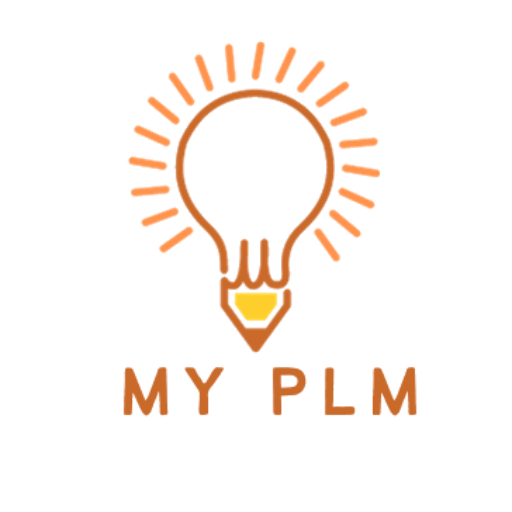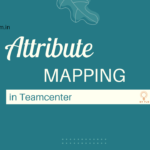If you’re working in product development or technical documentation, you’re probably familiar with Teamcenter and Rapid Author. These are two powerful tools, each designed to streamline different aspects of the product lifecycle. Teamcenter is a Product Lifecycle Management (PLM) system that helps companies manage complex product data, while Rapid Author is a technical publication software focused on authoring 3D product documentation.
But what happens when you want to integrate the two? Well, that’s where the magic happens—connecting the detailed, structured data from Teamcenter with the documentation workflows of Rapid Author can seriously level up your efficiency and accuracy. Imagine being able to pull in product models, parts lists, and metadata directly from Teamcenter into your product documentation, while keeping everything updated and versioned.
In this post, we’ll walk through the basics of integrating Rapid Author with Teamcenter, making it easier to manage your product documentation while keeping everything synchronized. Whether you’re a Teamcenter administrator or a technical writer, this guide will help you connect these two systems seamlessly.
Table of Contents
Why Integrate Rapid Author with Teamcenter?
Before diving into the steps, let’s quickly cover why you’d want to integrate these two tools:
- Streamlined Workflow: No more toggling between multiple systems. With integration, you can easily pull product models, CAD data, and product structures from Teamcenter directly into Rapid Author.
- Version Control: Teamcenter’s robust version control can be leveraged for all your documentation, ensuring that each manual or technical publication stays in sync with the latest changes in the product design.
- Collaborative Documentation: Multiple teams—engineering, documentation, manufacturing—can work with a single source of truth. Everyone has access to the latest data, and technical writers can create and update documentation based on the most recent models and product info.
- Efficiency Gains: Automating the flow of data from Teamcenter into Rapid Author reduces manual entry, saving time and reducing errors in the process.
Step 1: Set Up Both Tools
Before integrating, both Teamcenter and Rapid Author need to be installed and configured correctly.
- Teamcenter should be up and running in your environment, with the necessary product data (models, assemblies, metadata) already stored in it.
- Rapid Author also needs to be installed. Rapid Author’s integration capabilities with Teamcenter often require a specific Teamcenter Integration Adapter. This adapter acts as a bridge, ensuring the two systems can communicate with one another.
Step 2: Define Integration Points
Next, you’ll want to identify what data should flow between Teamcenter and Rapid Author. Here’s what typically gets integrated:
- CAD Models: Bring 3D models and assemblies from Teamcenter into Rapid Author for documentation.
- Bill of Materials (BOM): Ensure the parts and components listed in your BOM are consistent in both systems.
- Metadata: Product data like part numbers, revisions, and descriptions can be imported into your technical documentation to keep everything accurate.
Mapping these data points helps ensure that you’re pulling the right content into your technical publications.
Step 3: Install the Teamcenter Integration Adapter
The Teamcenter Integration Adapter is a crucial component of the integration. It connects the two systems and enables things like:
- Importing product structure and CAD data into Rapid Author.
- Syncing metadata such as part numbers, descriptions, and revision statuses.
- Exporting documents and updates from Rapid Author back to Teamcenter.
Typically, this adapter will be provided as part of your Teamcenter license, so make sure it’s installed and properly configured.
Step 4: Configure Metadata and Document Management
Here’s where things get a little more specific. You’ll want to ensure that:
- Metadata Mapping: Any metadata from Teamcenter (e.g., part numbers, revision data) is correctly mapped to Rapid Author fields. This ensures that when you’re authoring documentation, the technical information is accurate.
- Version Control: Teamcenter handles version control of your product data, and Rapid Author should reflect this to avoid any discrepancies. This way, any changes made to a product in Teamcenter will be mirrored in the documentation, ensuring you’re always working with the latest version.
- Document Checkout/Check-in: As with any PLM system, you’ll likely want to enable check-in/check-out functionality for your documents. This means when a technical writer opens a file in Rapid Author, they’re essentially “checking it out” from Teamcenter, preventing others from making changes at the same time.
Step 5: Test the Integration
After everything is set up, the next step is to run some tests. This step is critical to ensure everything is flowing correctly between the two systems. Here’s what you should check:
- Data Sync: Ensure that data (like product models, BOMs, and metadata) are syncing correctly from Teamcenter into Rapid Author.
- Document Updates: Try making a change to a model or part in Teamcenter, then check if that change is reflected in the documentation in Rapid Author.
- Version Control: Test that version control is working properly—when you make updates to the documentation, check that it matches the versioning scheme set in Teamcenter.
Step 6: Deploy and Train Your Team
Once the integration has been tested and everything is working smoothly, it’s time to deploy it to your team. This could mean rolling it out across your company or department. Additionally, it’s a good idea to provide training for your technical writers, engineers, and anyone else who will interact with these tools.
Benefits of the Integration
The integration between Rapid Author and Teamcenter can have a significant impact on your workflow:
- Improved Accuracy: By syncing product data directly from Teamcenter into your technical publications, you eliminate the risk of using outdated or incorrect information.
- Enhanced Collaboration: Multiple teams can work from the same data, leading to faster and more efficient product documentation creation.
- Time Savings: Automation of data transfers between the systems reduces manual work and accelerates the overall documentation process.
- Better Version Control: With Teamcenter handling the product lifecycle, Rapid Author ensures that your documentation always aligns with the latest revisions and designs.
Conclusion
Integrating Rapid Author with Teamcenter is a game-changer for any company dealing with complex products that require detailed technical documentation. By syncing data and automating workflows, you can improve accuracy, streamline processes, and reduce the time spent on manual updates.
If you’re in charge of managing either of these systems, it’s definitely worth the effort to set up the integration. With the right configuration, you’ll have a seamless flow of data between product design and documentation, ensuring that your technical publications always stay accurate and up to date.
Are you ready to integrate your systems? Let us know in the comments or share your experiences—what worked, what didn’t, and any tips you have for getting the most out of Teamcenter and Rapid Author!
Read More Articles
Exploring the Power of Tiles in Teamcenter’s Active Workspace Client
Understanding the Contrast: Volume vs. Database in TC
Exploring TC: The Central Hub for Product Lifecycle Management
Understanding Item Revision in TC: A Comprehensive Guide
Unlocking Efficiency and Precision: Understanding Workflow Designer in TC
Understanding PLM (Product Lifecycle Management): A Comprehensive Guide
Demystifying BMIDE in TC: Empowering Effective PLM Solutions
Understanding Organizations in TC: Building Efficient Work Structures
Demystifying Datasets in TC: A Comprehensive Guide
A Step-by-Step Guide to Installing TC Software
Revealed Pseudofolders in Siemens TC: Simplifying Data Management for Engineers
Unlocking TC’s Potential: A Guide to Creating Custom Properties




